The Mallee teems with wildlife, among the many species is this glorious honeyeater.
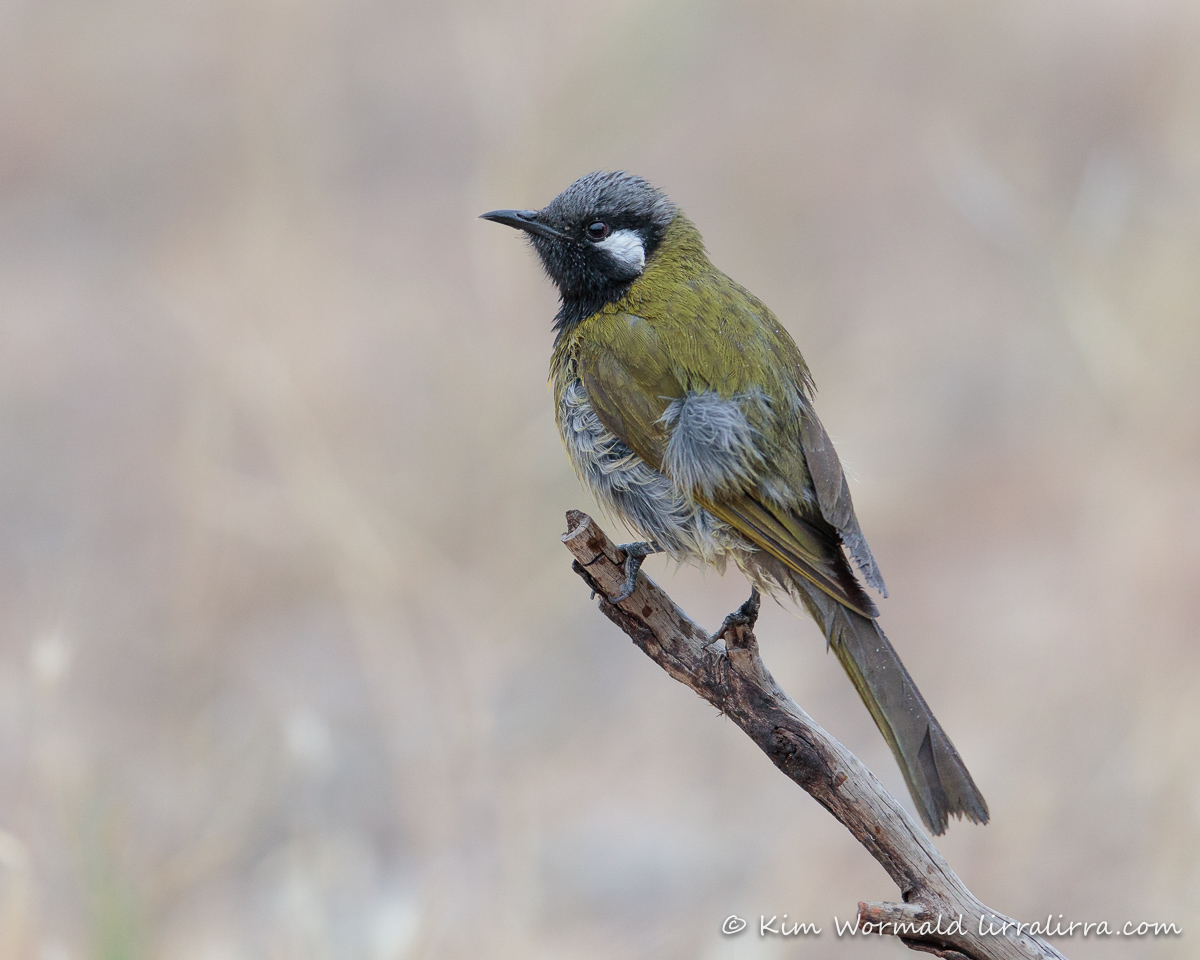
1/640, f/5.6, ISO 2000, focal length 560mm
Canon 5DSR, Canon 200-400 L IS USM EXT
White-eared Honeyeaters occasionally visit my place but I rarely get to photograph them. It was a real treat to spend so long watching this one as it dipped into a small pond before hopping along this branch to shake itself free of water droplets.
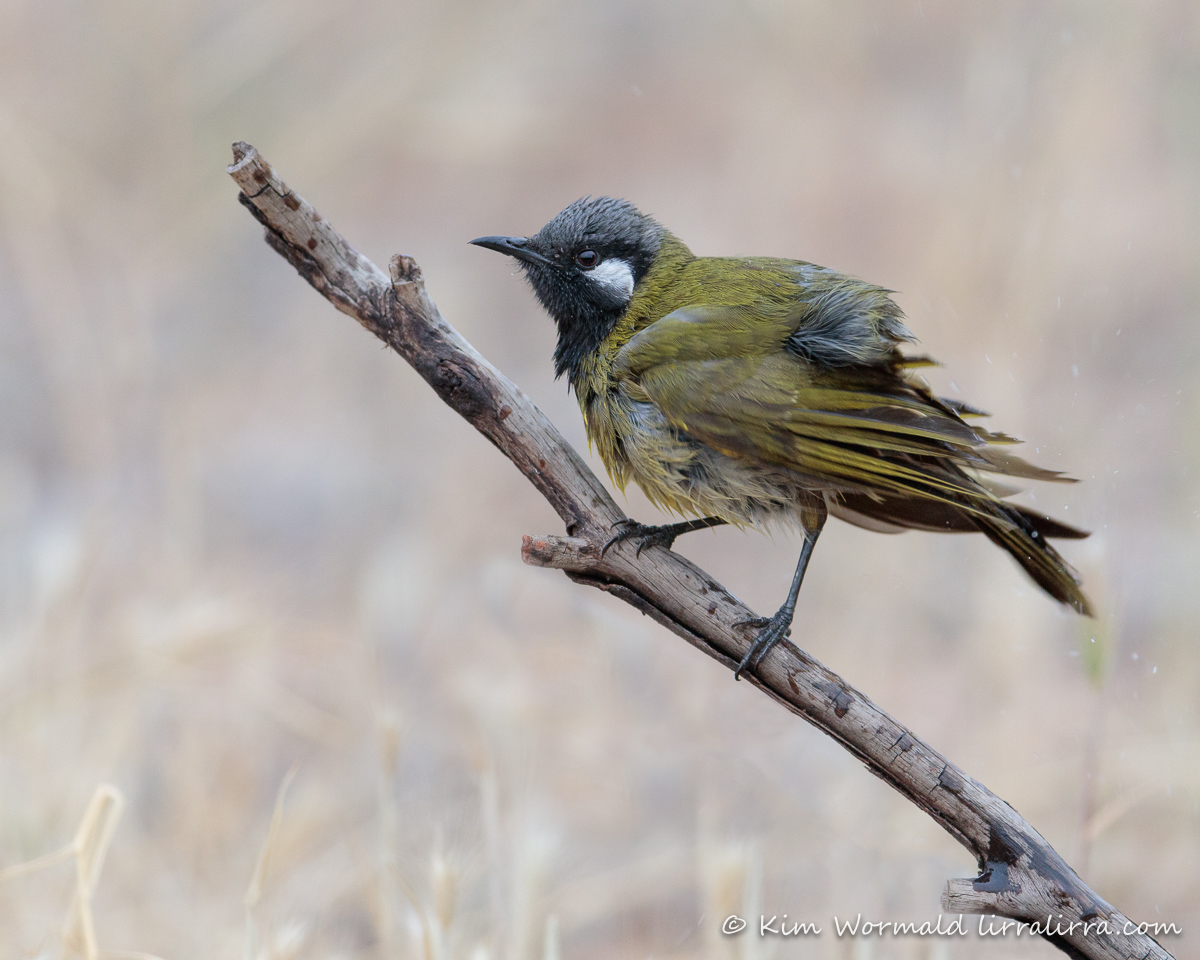
1/640, f/5.6, ISO 2000, focal length 560mm
Canon 5DSR, Canon 200-400 L IS USM EXT
Like last week’s Lewin’s Honeyeaters, these honeyeaters are easy to identify from a distance because of their distinctive white ear patches. Their black face and bib is also distinct, along with the grey feathers on their forehead and crown. Their upperparts are a beautiful olive with yellow flecks, while their underparts are yellow and grey. They have black bills and dark red irises. Beautiful honeyeaters!
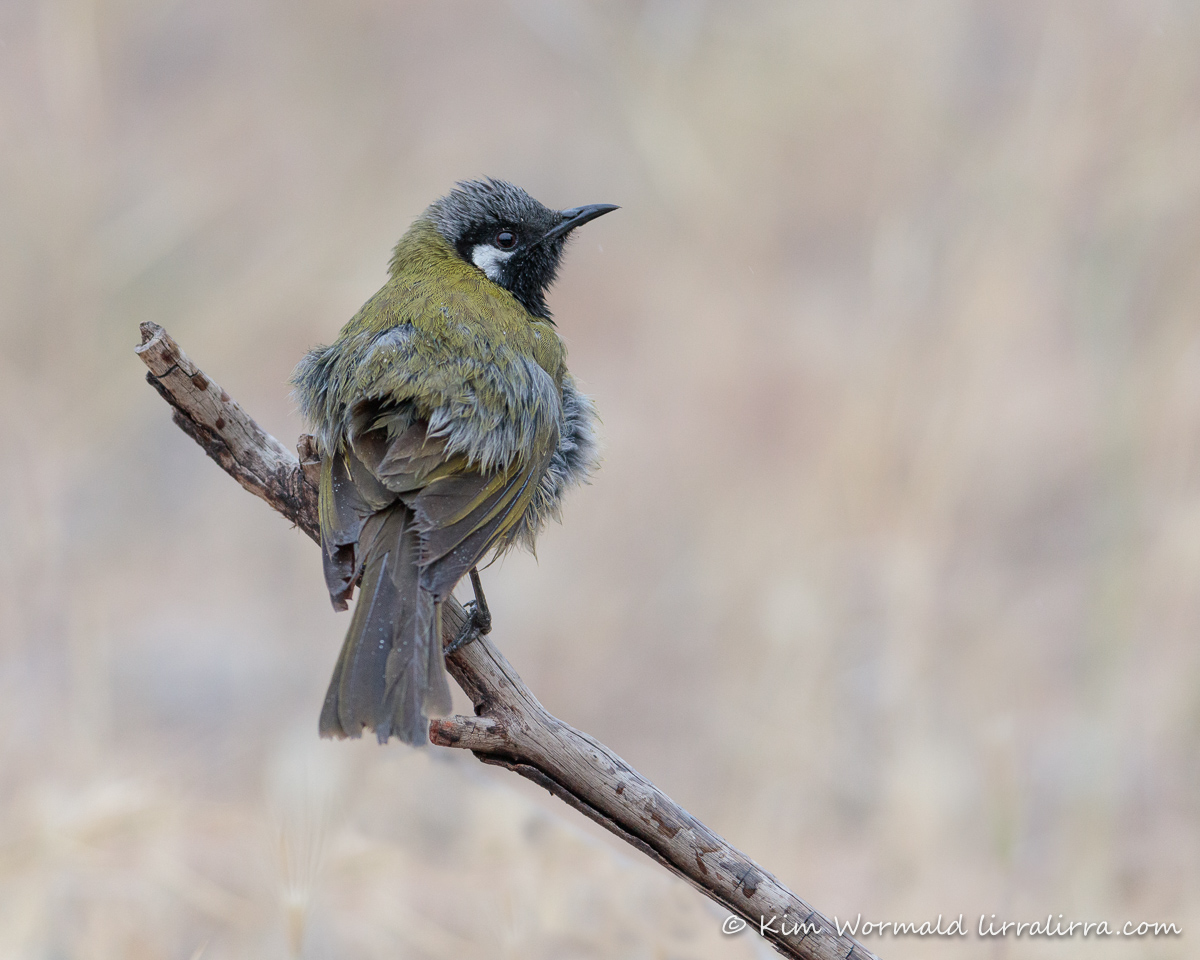
1/640, f/5.6, ISO 2000, focal length 560mm
Canon 5DSR, Canon 200-400 L IS USM EXT
I love seeing birds fluffing their feathers. In this photograph it’s fluffing the feathers on its body as well as its chin and head.
The Mallee often gives beautifully subtle backgrounds, especially when I set a narrow depth of field to blur the background and ensure the bird is focussed and stands out from the surrounding vegetation.
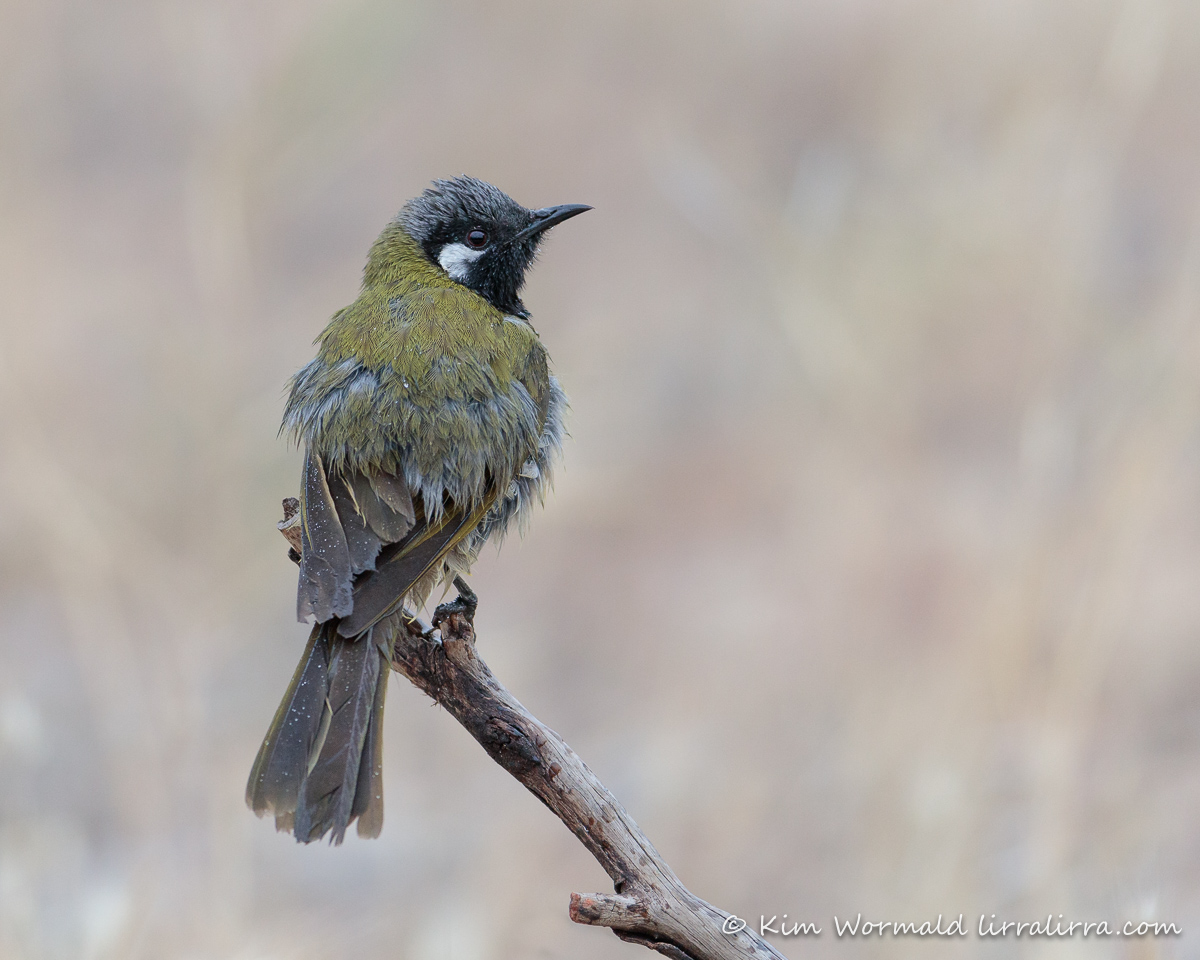
1/640, f/5.6, ISO 2000, focal length 560mm
Canon 5DSR, Canon 200-400 L IS USM EXT
The White-eared Honeyeater has hopped to the top of the branch for this shot, which is maybe my favourite of the bunch. There are water droplets on its wings and tail as it shakes its upper body feathers.
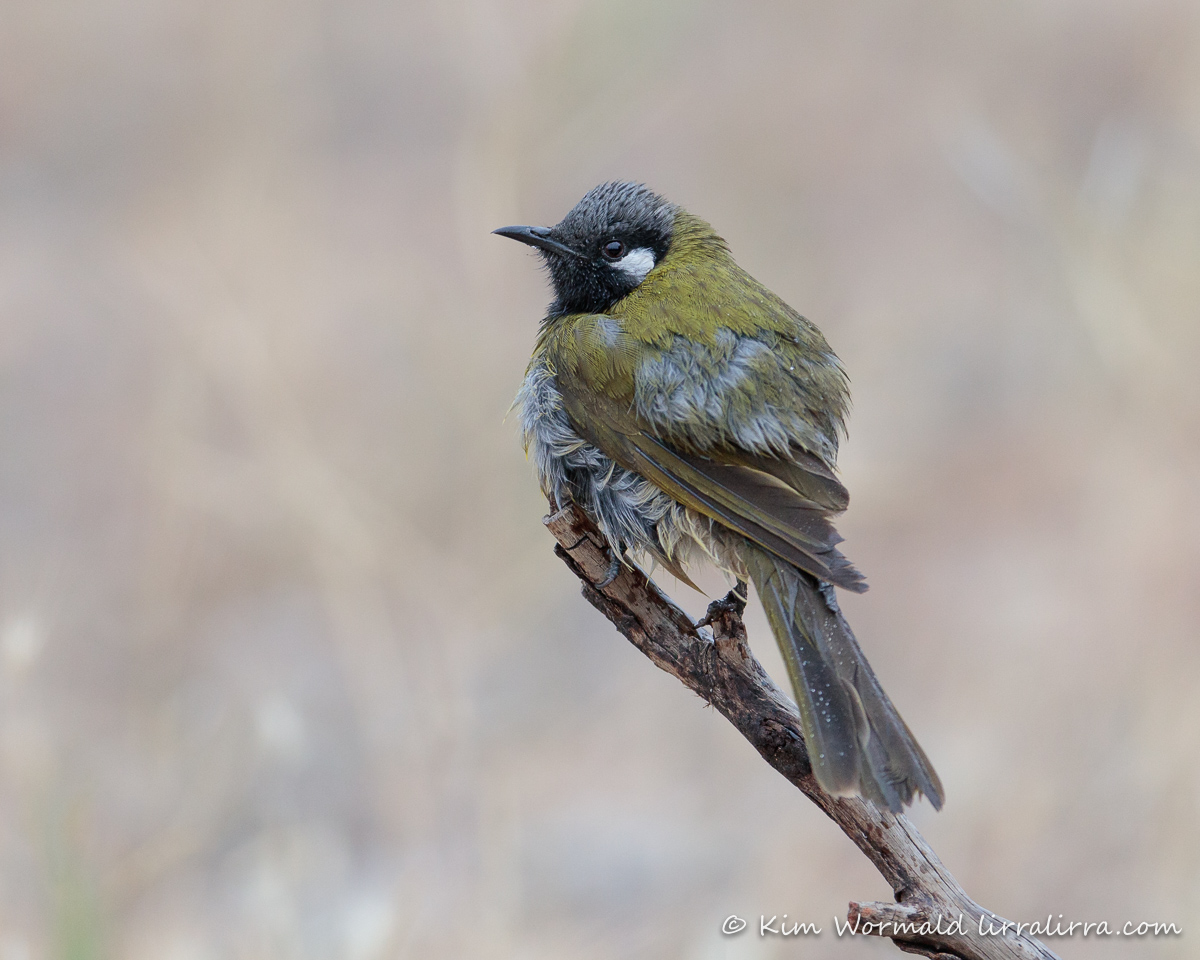
1/640, f/5.6, ISO 2000, focal length 560mm
Canon 5DSR, Canon 200-400 L IS USM EXT
Look at those colours. Shivers of loveliness. Now I’m wondering if this shot is my favourite!
White-eared Honeyeaters are usually seen in pairs or singly and they prefer treed areas. They eat primarily insects but also take fruit and nectar when available.
Happy birding, Kim
~ Prints and gifts Lirralirra Shop
~ Facebook page Kim Wormald – lirralirra
~ Facebook group Ethical Bird Photography

My fave is the second last – love seeing the water droplets on the chin as well as the tail – just gorgeous Kim.
Thanks Fiona, your lovely comment made me re-look at them all and I see what you mean 🙂
So beautiful.
Thank you Carolyn, we have some truly splendid honeyeaters
Delightful! I love watching the birds shake and fluff their feathers after a dip in the bird bath.
It’s so beautiful to watch isn’t it. Though they practically break the ice to bathe some morning, shiver me timbers, they are so tough!
What an absolute charmer. And beautifully captured. I couldn’t choose a favourite. As I scanned up and down it changed. And changed again.
Birds look so different don’t they when they’re being sleek like the spinebill I’m watching as I write, or fluffed up like little tennis balls.